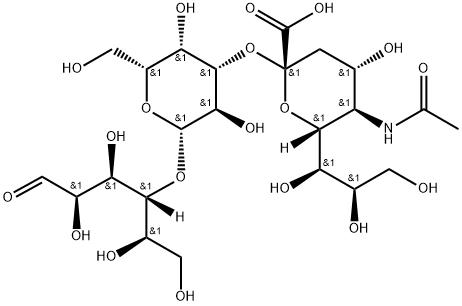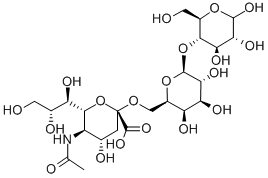4-AMINOBUTYRALDEHYDE DIMETHYL ACETAL
- CAS NO.:19060-15-2
- Empirical Formula: C6H15NO2
- Molecular Weight: 133.19
- MDL number: MFCD00189373
- EINECS: 407-690-6
- SAFETY DATA SHEET (SDS)
- Update Date: 2024-12-18 14:08:52

What is 4-AMINOBUTYRALDEHYDE DIMETHYL ACETAL?
The Uses of 4-AMINOBUTYRALDEHYDE DIMETHYL ACETAL
4-Aminobutyraldehyde dimethyl acetal acts as an intermediate in organic synthesis. It is used in the preparation of pineal hormone melatonin by reaction with 4-methoxyphenylhydrazine hydrochloride and acetic anhydride. Further, it is also used in the preparation of ficuseptine, juliprosine, and juliprosopine.
Properties of 4-AMINOBUTYRALDEHYDE DIMETHYL ACETAL
| Boiling point: | 85°C/22mm |
| Density | 0.95 |
| refractive index | 1.4300 |
| Flash point: | 85°C/22mm |
| storage temp. | Keep in dark place,Inert atmosphere,Room temperature |
| solubility | Miscible with benzene. |
| form | clear liquid |
| pka | 10.50±0.10(Predicted) |
| color | Colorless to Light yellow |
| Sensitive | Air Sensitive |
| CAS DataBase Reference | 19060-15-2(CAS DataBase Reference) |
| EPA Substance Registry System | 1-Butanamine, 4,4-dimethoxy- (19060-15-2) |
Safety information for 4-AMINOBUTYRALDEHYDE DIMETHYL ACETAL
| Signal word | Danger |
| Pictogram(s) |
 Flame Flammables GHS02  Corrosion Corrosives GHS05  Exclamation Mark Irritant GHS07 |
| GHS Hazard Statements |
H226:Flammable liquids H302:Acute toxicity,oral H314:Skin corrosion/irritation H317:Sensitisation, Skin H412:Hazardous to the aquatic environment, long-term hazard |
| Precautionary Statement Codes |
P210:Keep away from heat/sparks/open flames/hot surfaces. — No smoking. P233:Keep container tightly closed. P240:Ground/bond container and receiving equipment. P260:Do not breathe dust/fume/gas/mist/vapours/spray. P264:Wash hands thoroughly after handling. P264:Wash skin thouroughly after handling. P270:Do not eat, drink or smoke when using this product. P272:Contaminated work clothing should not be allowed out of the workplace. P273:Avoid release to the environment. P280:Wear protective gloves/protective clothing/eye protection/face protection. P303+P361+P353:IF ON SKIN (or hair): Remove/Take off Immediately all contaminated clothing. Rinse SKIN with water/shower. P305+P351+P338:IF IN EYES: Rinse cautiously with water for several minutes. Remove contact lenses, if present and easy to do. Continuerinsing. P370+P378:In case of fire: Use … for extinction. P405:Store locked up. P403+P235:Store in a well-ventilated place. Keep cool. P501:Dispose of contents/container to..… |
Computed Descriptors for 4-AMINOBUTYRALDEHYDE DIMETHYL ACETAL
| InChIKey | TYVAXMOICMBSMT-UHFFFAOYSA-N |
New Products
Tert-butyl bis(2-chloroethyl)carbamate 4-Methylphenylacetic acid N-Boc-D-alaninol N-BOC-D/L-ALANINOL 3-Morpholino-1-(4-nitrophenyl)-5,6-dihydropyridin- 2(1H)-one Furan-2,5-Dicarboxylic Acid Tropic acid 1,1’-CARBONYLDIIMIDAZOLE DIETHYL AMINOMALONATE HYDROCHLORIDE R-2-BENZYLOXY PROPIONIC ACID 1,1’-CARBONYLDI (1,2-4 TRIAZOLE) N-METHYL INDAZOLE-3-CARBOXYLIC ACID (2-Hydroxyphenyl)acetonitrile 4-Bromopyrazole 5-BROMO-2CYANO PYRIDINE 5,6-Dimethoxyindanone 5-broMo-2-chloro-N-cyclopentylpyriMidin-4-aMine 2-(Cyanocyclohexyl)acetic acid 4-methoxy-3,5-dinitropyridine 2-aminopropyl benzoate hydrochloride 1-(4-(aminomethyl)benzyl)urea hydrochloride diethyl 2-(2-((tertbutoxycarbonyl)amino) ethyl)malonate tert-butyl 4- (ureidomethyl)benzylcarbamate Ethyl-2-chloro((4-methoxyphenyl)hydrazono)acetateRelated products of tetrahydrofuran







![ALPHA-NEU5AC-[2->8]-ALPHA-NEU5AC-[2->3]-BETA-D-GAL-[1->4]-D-GLC SODIUM SALT](https://img.chemicalbook.in/CAS/GIF/18409-15-9.gif)
You may like
-
 4-Aminobutyraldehyde Dimethyl Acetal CAS 19060-15-2View Details
4-Aminobutyraldehyde Dimethyl Acetal CAS 19060-15-2View Details
19060-15-2 -
 4-Aminobutyraldehyde dimethyl acetal CAS 19060-15-2View Details
4-Aminobutyraldehyde dimethyl acetal CAS 19060-15-2View Details
19060-15-2 -
 1975-50-4 98%View Details
1975-50-4 98%View Details
1975-50-4 -
 2-HYDROXY BENZYL ALCOHOL 98%View Details
2-HYDROXY BENZYL ALCOHOL 98%View Details
90-01-7 -
 2-Chloro-1,3-Bis(Dimethylamino)Trimethinium Hexafluorophosphate 221615-75-4 98%View Details
2-Chloro-1,3-Bis(Dimethylamino)Trimethinium Hexafluorophosphate 221615-75-4 98%View Details
221615-75-4 -
 14714-50-2 (2-Hydroxyphenyl)acetonitrile 98+View Details
14714-50-2 (2-Hydroxyphenyl)acetonitrile 98+View Details
14714-50-2 -
 118753-70-1 98+View Details
118753-70-1 98+View Details
118753-70-1 -
 733039-20-8 5-broMo-2-chloro-N-cyclopentylpyriMidin-4-aMine 98+View Details
733039-20-8 5-broMo-2-chloro-N-cyclopentylpyriMidin-4-aMine 98+View Details
733039-20-8
Statement: All products displayed on this website are only used for non medical purposes such as industrial applications or scientific research, and cannot be used for clinical diagnosis or treatment of humans or animals. They are not medicinal or edible.